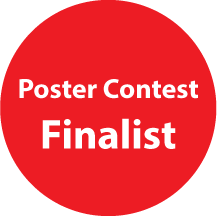MSACL 2024 Abstract
Self-Classified Topic Area(s): Proteomics > Emerging Technologies > Cases of Unmet Clinical Needs
|
|
Poster Presentation
Poster #25b
Attended on Wednesday at 14:30
|

|
 From the Non-invasive Breast Microenvironment to Metastatic Breast Cancer: Pathological Variation in Collagen Proteomic Signatures by Mass Spectrometry Imaging From the Non-invasive Breast Microenvironment to Metastatic Breast Cancer: Pathological Variation in Collagen Proteomic Signatures by Mass Spectrometry Imaging
Taylor S. Hulahan (1), Ashlyn Ivey (1), Elizabeth N. Wallace (1), Laura Spruill (1), Yeonhee Park (2), Anand Mehta (1), Robert West (3), Robert Michael Angelo (3), Graham Colditz (4), Jeffrey R Marks (5), E Shelley Hwang (5), Richard R. Drake (1), Harikrishna Nakshatri (6), Marvella Ford (1), Peggi M. Angel (1)
(1) Medical University of South Carolina, Charleston, SC (2) University of Wisconsin-Madison, Madison, WI (3) Stanford University, Stanford, CA (4) Washington University, St. Louis, MO (5)Duke University, Durham, NC (6) Indiana University School of Medicine, Indianapolis, IN

|
Taylor Hulahan, B.A. (Presenter)
Medical University of South Carolina >> POSTER (PDF) |
|
Presenter Bio: Taylor Hulahan is an MD-PhD candidate in Dr. Peggi Angel’s Laboratory at the Medical University of South Carolina. She completed her undergraduate degree at the University of California-Berkeley with high distinction in general scholarship and the highest honors for her Integrative Biology major. She is currently in the Medical Scientist Training Program at the Medical University of South Carolina, where she has completed her first two years of medical and graduate school. |
|
|
|
|
Abstract Introduction: While ductal carcinoma in situ (DCIS) does not directly pose a significant mortality risk, the subsequent development of invasive breast cancer (IBC) doubles a patient’s breast cancer-specific mortality rate compared to the general population. Once diagnosed as IBC, metastasis in regional areas decreases the survival rate by 13%. Notably, the progression to IBC is characterized by the disruption of an intact basement membrane, in which collagens are a key constituent. Prolyl hydroxylases are understood to be essential in breast cancer invasion and metastasis, but hydroxylation sites of collagen critical to the primary tumor and metastatic sites have yet to be defined. We hypothesize that the hydroxylation status of discrete collagen proline residues contributes to pathologies of breast cancer progression spanning non-invasive to metastatic disease.
Methods: Extracellular matrix (ECM)-targeted spatial proteomics using Matrix-Assisted Laser Desorption/Ionization-Quadrupole Time-Of-Flight (MALDI-QTOF) imaging followed by high-resolution mass-accuracy proteomics for peptide identification was used to assess ECM proteomic changes within non-invasive, invasive, and metastatic breast cancers. To investigate ECM peptide signatures of DCIS and IBC pathologies, a comparative analysis was performed using a 22-sample cohort derived from 17 different patients defined as pure DCIS (n=9), mixed DCIS-IBC (n=8), and pure IBC (n=4). To spatially define ECM alterations with breast cancer metastases, lymph node metastases were compared to patient-matched primary tumors and normal lymph nodes using specimens from triple-negative breast cancer (TNBC) patients (n=5) and tissue microarrays from 31 generational South Carolina women with IBC (n=21).
Results: Comparative analysis between DCIS and IBC pathologies revealed over 1,000 putatively identified peaks that were linked to pathological annotations or adjacent regions. Forty-three peaks had significantly different intensity profiles between DCIS and IBC pathologies by Mann-Whitney U-test (p-value<0.05). Eight of these differentially expressed peptides were identified as fibrillar collagen sequences within annotated triple helical regions and many contained hydroxylated proline sites. These fibrillar collagen domains could discriminate between pathologies by area under the receiver operating curve (AUROC)≥0.75 and Wilson/Brown t-test (p-value<0.05). To determine if proximity to IBC influenced the proteomic profile of DCIS pathologies, mixed DCIS-IBC specimens (n=4) with DCIS lesions varying distances from the invasive cancer field were examined for ECM proteomic field effects. Notably, DCIS lesions within invasive regions had a more similar proteomic profile to IBC than DCIS lesions located more distally from the IBC region via principal component analysis and hierarchical clustering. A four-sample subset used for higher-resolution analysis demonstrated DCIS intra-tumoral heterogeneity at the individual lesion level. To assess collagen domain variation with metastases, a study on the TNBC metastatic niche of axillary lymph nodes has been initiated. Spatial segmentation analysis of 187 putatively identified peptides and 680,216 pixels revealed 10 uniquely localized proteomic groups with groups shared between the primary tumor and the metastatic niche. Of these 187 putatively identified peptides, 158 peptides were similarly expressed between the primary tumor and metastatic lymph nodes by Wilcoxon rank-sum test (p>0.05). Seven peptides could discriminate between metastatic and normal lymph node specimens, while 22 peptides could discriminate between metastatic lymph nodes and the primary tumor (AUROC>0.70; p-value < 0.05). Within the tissue microarray set, 10% of peptides from fibrillar collagens with variable sites of proline hydroxylation could discriminate between metastatic and normal lymph nodes (AUROC>70%; p-value< 0.01).
Conclusions: Our preliminary interrogation highlights emerging differences in collagen post-translational site modifications between DCIS, IBC, and breast cancer metastases. These signatures could be useful for understanding breast cancer recurrence and progression. Further investigation is being pursued in an expanded, racially diverse cohort across all stages of the breast cancer spectrum.
|
|
Financial Disclosure
| Description | Y/N | Source |
| Grants | yes | NIH |
| Salary | no | |
| Board Member | no | |
| Stock | no | |
| Expenses | no | |
| IP Royalty | no | |
| Planning to mention or discuss specific products or technology of the company(ies) listed above: |
no |
|

